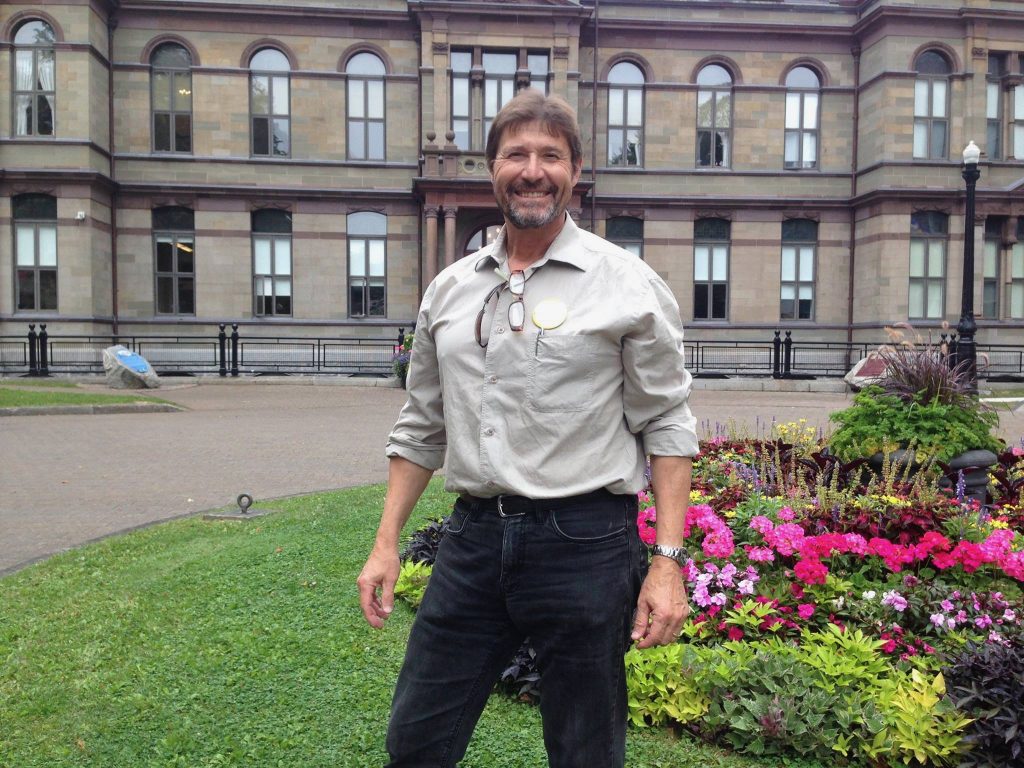By David Dodge
Richard Zurawski is a meteorologist, a TV personality and a man with a plan for Halifax to tackle climate change and become carbon neutral by 2050.
Oh, and Richard Zurawski is also a city councillor in the Halifax Regional Municipality of Nova Scotia.
Halifax just passed HalifACT 2050 climate change plan that commits the municipality to get to carbon neutrality by 2050.

If you thought fighting climate change was hard, you’d be right. Zurawski also a former federal green party candidate, patiently and methodically led Halifax to climate action over a number of years.
“My modus operandi as a councillor was to begin with the thin edge of the wedge and to ask that a little term be introduced into our evaluation DNA, which was to say that we would make our decisions based on evidence-based decision making,” says Zurawksi.
Council readily accepted this. So Zurawski then suggested they look into climate change.
“If we’re doing evidence-based decision making, then how about looking at all the evidence pointing to climate change, which is probably the worst existential threat that we have on the planet today,” says Zurawski.
Once the evidence was presented Halifax became the second municipality in Canada to declare a climate emergency in January 2019. Vancouver was the first and today more than 500 Canadian jurisdictions have followed suit.
One you confront the existential threat of climate change, it’s pretty obvious you need a plan.
“And the plan was to address climate change from the perspective of the IPCC the Intergovernmental Panel on Climate Change, 1.5 degrees Celsius, zero net emissions by 2050,” says Zurawski.
“It’s a big mouthful. Basically, we want to be at zero emissions and limit our temperature increase to one point five degrees Celsius.”
Like many other cities or states that have done their homework, Halifax now knows it will take transformation, not tinkering to fight climate change.
If you are wondering what it takes to get a City like Halifax to carbon neutrality by 2050, it’s an all-in plan that includes 46 actions that if achieved would be truly transformational.

HalfiACT 2050 Climate Plan ACTIONS (see page 39)
- Net-zero new construction by 2030
- Retrofit all existing buildings by 2040
- Improve the energy efficiency of industry by 75 per cent
- Install 1,300 megawatts (MW) of rooftop solar with energy storage
- Expand ground mount solar by 300 MW, wind by 280 MW and add 100 per cent renewable district energy
- By 2030, 100 per cent of new vehicle sales are electric
- Net-zero municipal operations by 2030
- Dramatically improve transit and support mode shift (walking and cycling)
- Plus 38 more actions
“So, if we’re into building new buildings, new roads, new infrastructure, looking at transit, acquiring new buses, whatever plans, they have to be looked at through the lens of climate change and through HalifACT, 2050,” says Zurawski.
Generally, cities in Canada find transportation and buildings together make up for about 65 per cent of their emissions which is why you see pushes for net-zero building standards and electric vehicles both in the city and the community in city plans.
The upside of a really hard job
Halifax has plotted this pathway to carbon neutrality and it’s a really, really big challenge. As you see from the goals in the above list Haligonians must electrify basically all transportation, retrofit all old buildings, build only net-zero new buildings, install a lot of solar and build new wind farms and install renewably energized district energy systems.

And this is going to cost a lot of money – about $1 billion per year for many years. However, Halifax goes to great lengths to point out the benefits of implementing its climate plan.
Annual savings on energy reach $500 million by 2030 and $1 billion by 2040. The report says this means savings of $3,700 per household by 2050 and millions in savings for business, industries, and institutions.

They have even plotted the person-years of employment associated with these investments. The report predicts 5,000 – 10,000 person-years of employment per year for the next two decades. Most of the jobs come from building retrofits, net-zero buildings, and local renewable energy generation, many of which are local jobs.

We’re all going to die!
I asked Richard why climate change is a big issue for him and he was pretty blunt: “We’re all going to die. I would like to die of old age as opposed to heat death or in in a time of conflagration where the planet is burning up.”
”I worry about the specter of runaway greenhouse effect, and I think we may be heading towards something as bad as what happened in the paleoscene/eocene thermal max 55 million years ago, which created a loss of species, a spike in temperatures of 15 degrees Celsius higher than was normal at the time, and it took more than five million years for it to cool down.”
Zurawski has a masters in physics and is a meteorologist and although I didn’t sense he is a particularly patient man, he has plotted along methodically for years to help Halifax Regional Municipality adopt a climate plan that well-researched, ambitious and up to the task of tackling climate change.
The big challenge is yet to come. The HRM must budget for and make these investments to win the battle against climate change and to get the benefits highlighted in the report.
The City of Vancouver was the first to declare a climate emergency in Canada and has one of the best developed climate plans and is well into implementing it. The City of Edmonton has a solid energy transition plan, which is currently being updated to live within the Paris 1.5 degree emissions limits. Indeed it seems cities around the world are leading the way with legitimate plans to transform the economy and get to carbon neutrality.

